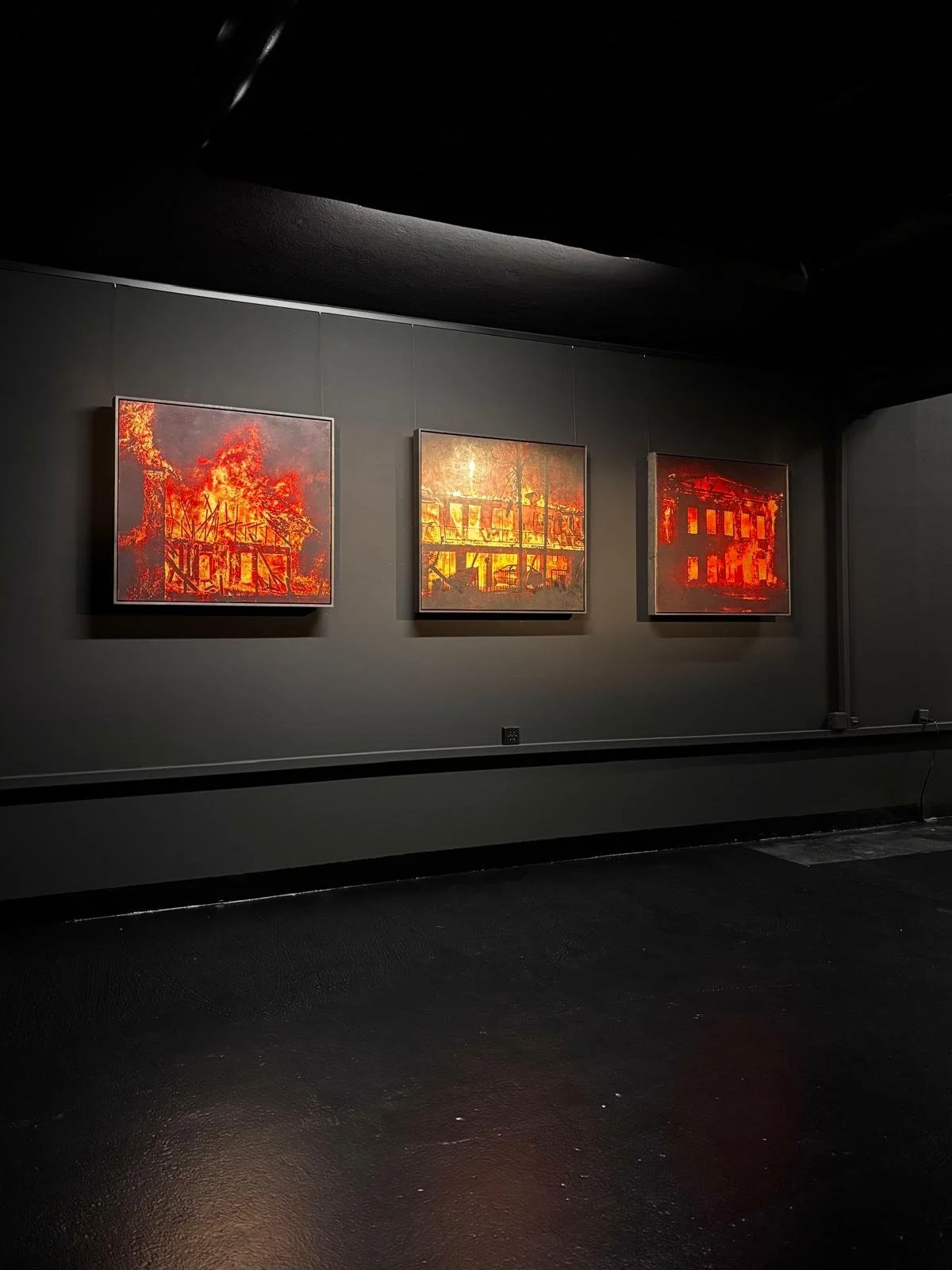ULF SAUPE
23 OCTOBER - 29 NOVEMBER 2025
From the moment Ulf Saupe (b. 1979) picked up his first camera at the age of six, it became clear that photography was not simply a way of recording the world around him, but a tool that could transform perception itself. For Saupe, the act of photographing is not about looking, but about learning to see — a subtle yet powerful shift that turns us from passive observers into active participants in our environments. This early intuition became the foundation of an artistic journey that continues to challenge, expand, and stretch the very boundaries of what photography can be.
Although Saupe works with the medium of photography, he resists the label of photographer. His practice exists beyond easy definition, inhabiting a liminal space between categories: subjectivity and objectivity, documentation and imagination, realism and abstraction. He defines his approach as painting with light — an alchemical process in which photography becomes both a scientific experiment and a deeply personal meditation. His professor, Floris Neusüss, alongside the experimental chemistry of 19th-century analog photography, deeply shaped this vision.
Saupe embraced not the immediacy of the snapshot, but the slowness of a process that values attention and contemplation over rapid consumption. Each gum print requires days or even weeks to complete. Every negative is processed individually through multiple stages, ensuring that each final piece possesses its own distinct character. For this reason, Saupe refers to them as variations rather than editions. Unlike standard photographic prints, gum prints are remarkably durable, ensuring not only the longevity of the artist’s oeuvre but also extending the life of the natural subject matter embedded within them. Frequently, Saupe finishes the process by painting over the photographic prints, interweaving complex pigments and gestural energy into the background of the pictorial planes, thus symbiotically blending the traditions of two different mediums. What occurs is less the mechanical reproduction of an image than the intimate unfolding of a singular event.
Nature and the elements occupy the heart of Saupe’s oeuvre. His fascination with animism — the belief that the natural world is alive, interconnected, and symbiotic — draws him away from anthropocentrism and toward a practice that reflects the vitality of nonhuman forces. The landscapes he manipulates through shifts of scale, color, and direction feel both uncannily familiar and entirely new. In them, coal, volcanic ash, and other raw materials are not simply depicted but incorporated into the very structure of some of the prints. These works are not representations of nature but extrapolations of it — fragments of the world that endure beyond extractive culture, given independent aesthetic life through the artist’s hand.
This encounter with Saupe’s work is not instantaneous. His images resist the impatient consumption with which we often internalize photographic media. Instead, they slow us down, asking us to linger with the unfamiliar, to wrestle with what cannot be immediately named. It is in this brief suspension — those few seconds when we are confronted with something we cannot neatly classify — that perception opens. Saupe describes this state as Immediacy: a rare moment when judgment, ego, and politics fall away, and we see without filters. His 2023 exhibition at the Centro Atlántico de Arte Moderno took its title from this idea, crystallizing a concept that had long been at the core of his practice.
The Sublime, as first theorized by Edmund Burke, is another crucial aspect of Saupe’s work. The suspension of constructed meaning, the confrontation with forces larger than ourselves, the return to a primal emotional response — all of these echo in Saupe’s landscapes. His art resists categories, refusing to be confined to a single medium, genre, or historical lineage. Instead, it offers a clean slate, a moment of liberation from socio-political agendas and from the weight of the artistic canon.
Ulf Saupe’s oeuvre leaves us with questions rather than answers. It demands attention, yet rewards it with wonder. His works remind us of what persists beyond human systems — a poetic truth distilled into elemental form: water flows, fire burns, rock endures, and trees whisper.















